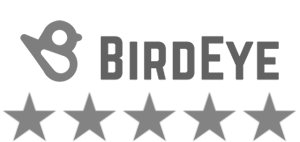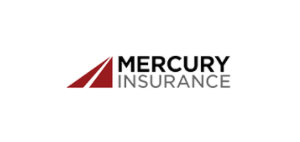If you’re dealing with water damage in your home, you may be wondering if it’s safe to sleep in the affected areas. Water damage can cause a variety of issues that can not only compromise the safety of your home but also impact your health. In this section, we’ll explore the safety aspects of sleeping in a house with water damage. We’ll assess the potential risks and provide insights to help you ensure the safety and health of yourself and your loved ones.
Key Takeaways
- Water damage can pose risks to your safety and health.
- Potential hazards include mold growth, pathogens, and respiratory problems.
- Assess the safety of the sleeping area by checking for electrical hazards, structural integrity, and air quality.
- Mitigate risks by ensuring proper ventilation, preventing mold growth, and addressing underlying issues.
- Seek professional help to restore the house to a safe condition.
Understanding the Risks of Water Damage
Water damage can pose several risks to your health and safety, especially if left unaddressed. Below are some potential risks of water damage that you should be aware of:
| Risks | Explanation |
|---|---|
| Mold growth | Excess moisture from water damage can lead to the growth of mold, which can cause respiratory problems, allergic reactions, and other health issues. |
| Structural damage | Water damage can weaken the structural integrity of the building, which can lead to collapse or other hazards. |
| Electrical hazards | Water can damage electrical systems and increase the risk of electrical shocks, fires, and other hazards. |
| Pathogens | Water damage can lead to the proliferation of harmful bacteria and viruses, which can cause infections and illnesses. |
Understanding these risks is vital in assessing the safety of sleeping in a house with water damage. It is important to take proactive measures to address these issues and ensure a safe living environment for you and your loved ones. In the next section, we’ll discuss the potential health hazards of sleeping in a house with water damage.
Potential Health Hazards of Sleeping in a House with Water Damage
Water damage can have serious consequences on the health of the occupants, particularly if left unaddressed. Here are some of the potential hazards you need to be aware of if you are sleeping in a house with water damage:
| Hazard | Description |
|---|---|
| Mold growth | Exposure to mold can trigger allergic reactions, respiratory problems, and other health issues. Mold grows rapidly in damp or wet environments, making it a significant risk in houses with water damage. |
| Exposure to pathogens | Standing water and dampness can create an ideal breeding ground for harmful bacteria, viruses, and other pathogens that can cause infections, illnesses, and other health issues. |
| Respiratory problems | Inhaling airborne mold spores, dust, and other pollutants can cause respiratory problems such as asthma, bronchitis, and other breathing issues. Children, the elderly, and people with weakened immune systems are particularly vulnerable. |
It’s essential to take these risks seriously and implement measures to mitigate them if you are sleeping in a house with water damage. Otherwise, you and your loved ones could be at risk of severe health consequences.
Assessing the Safety of the Sleeping Area
Assessing the safety of the sleeping area is essential when dealing with water damage in your home. Here are some steps you can take:
- Inspect for electrical hazards: Check all electrical systems and ensure they are dry and in good condition. Any damaged wires or circuits should be repaired by a licensed electrician before you continue to sleep in that area.
- Check structural integrity: Structural damage can weaken your house foundation, roof or walls, and can lead to potential injuries or collapse. It’s important to have a licensed structural engineer assess any significant or visible damage.
- Examine air quality: Water damage can often lead to mold and other airborne contaminants that can be harmful to your health. Using a dehumidifier and air purifier can help make the air cleaner and reduce the risk.
- Clear the sleeping area: If there is any debris or water remaining in the sleeping area, remove it and dispose of it appropriately. Clearing the area can help minimize the risk of mold growth or other health hazards.
By taking these steps, you can ensure the sleeping area in your home is safe after water damage. Don’t forget to continue monitoring the area for any potential issues, such as strange smells or signs of mold growth.
Mitigating Risks and Ensuring a Safe Sleep Environment
Dealing with water damage in your house can be stressful and overwhelming, but taking the necessary steps to create a safe sleep environment can help mitigate risks and promote a good night’s rest. Here are some practical tips to help you ensure a safe sleep environment in a house with water damage:
| Measures | Description |
|---|---|
| Proper ventilation | Opening windows and doors to increase air circulation can help reduce the risk of mold growth and improve air quality. |
| Mold prevention | Regularly cleaning and drying affected areas, fixing leaks, and reducing humidity can help prevent mold growth and mitigate health risks. |
| Addressing underlying issues | Identifying and addressing underlying issues such as structural damage and electrical hazards can help ensure a safe sleeping area. |
It’s also important to ensure proper hygiene practices such as washing your hands and taking a shower before bed to minimize exposure to pathogens. Using a dehumidifier and air purifier can further improve air quality and reduce health risks.
By implementing these measures, you can create a safe sleep environment and mitigate risks in a house with water damage. However, it is crucial to seek professional help and restoration services to address the underlying issues and ensure the safety and health of yourself and your loved ones.
Seeking Professional Help and Restoration Services
When dealing with water damage in your house, seeking professional help and restoration services should be a top priority. Not only do professionals have the expertise to properly assess the extent of the damage, but they also have the necessary tools and skills to restore your house to a safe condition.
Professional help can also ensure that the restoration process is carried out efficiently, minimizing the risk of further damage to your property. By working with certified professionals, you can have peace of mind knowing that your house is in good hands.
Restoration services can include a range of treatments depending on the severity of the water damage. These can include drying and dehumidification, mold remediation, and even structural repairs.
Keep in mind that attempting to restore your house on your own can be dangerous and may even exacerbate the damage. So, it’s crucial to call in the experts when dealing with water damage issues.
By seeking professional help and restoration services, you can ensure that your house is restored to a safe condition, minimizing the risks associated with sleeping in a house with water damage.
Conclusion
In conclusion, it is crucial to prioritize safety and health when dealing with water damage in a house. Sleeping in a house with water damage can pose significant risks, from respiratory problems to exposure to pathogens and mold growth. As such, it is essential to thoroughly assess the safety of the sleeping area, address underlying issues, and take measures to mitigate risks.
Creating a safe sleep environment in a house with water damage involves proper ventilation, mold prevention, and seeking professional help and restoration services. This ensures that the house is restored to a safe condition, reducing the potential health hazards and risks associated with water damage.
Remember, neglecting water damage in your house can lead to severe consequences for you and your loved ones. Take action today to ensure your safety and well-being.
FAQ
Is it safe to sleep in a house with water damage?
Sleeping in a house with water damage can pose potential risks to your safety and health. It is important to assess the situation and take appropriate measures to ensure a safe sleep environment.
What are the risks associated with water damage in a house?
Water damage can lead to various risks, including electrical hazards, compromised structural integrity, mold growth, and poor air quality. Understanding these risks is crucial in determining the safety of sleeping in a house with water damage.
What are the potential health hazards of sleeping in a house with water damage?
Sleeping in a house with water damage can expose you to potential health hazards such as mold spores, pathogens, and respiratory problems. It is important to address these issues to protect your well-being.
How can I assess the safety of the sleeping area in a house with water damage?
To assess the safety of the sleeping area, you should consider factors such as electrical safety, the stability of the structure, and the quality of indoor air. It is recommended to consult with professionals if you are unsure.
What steps can I take to mitigate risks and create a safe sleep environment in a house with water damage?
To mitigate risks and ensure a safe sleep environment, you can take measures such as ensuring proper ventilation, addressing mold issues promptly, and addressing the underlying causes of water damage. These actions will help reduce potential health risks.
Why is it important to seek professional help and restoration services for water damage?
Seeking professional help and restoration services is essential when dealing with water damage. Professionals have the expertise to assess the extent of the damage, identify hidden issues, and restore the house to a safe condition, ensuring your safety and well-being.




















